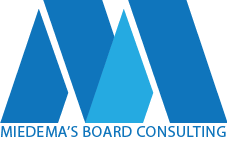If your nonprofit board is not using consent agendas, they are definitely worth considering. A consent agenda groups the all the routine agenda items into one vote making their approval fast and efficient. A board member can still request that an item or topic be removed from the consent agenda and deliberated about on its own but the items on the consent agenda are not discussed or deliberated on during the meeting. The beauty of consent agendas is that they free up the board’s valuable time so it has more time to discuss critical issues or strategic, external and forward-looking topics.
There are two keys to achieving a successful consent agenda: (1) starting small and (2) ensuring board members have the materials far enough in advance.
Starting small helps avoid overwhelming board members and gradually trains board members on how the process works. Small, routine items such as the approval of the minutes, the future meeting dates, signing authority schedules and routine correspondence are a good place to start. Once board members are comfortable with the process, add in other items such as changes to the Board Policy Manual, committee reports, contract approvals and final decisions on previously discussed issues. It is important to ensure that there are proper mechanisms in place to allow board members the opportunity to ask questions. This can be as simple as providing an email address or phone number of who they should contact before the meeting. The hardest topics to add to the consent agenda are the CEO, CFO and COO reports because they have the greatest potential to contain topics that are potentially controversial or of strategic significance. Any items of that nature should not be included in the administrative part of their reports and should be placed elsewhere on the agenda.
Sending out the materials far enough in advance is the second key. Board members need to have the appropriate documents to make informed decisions and they need time to read the reports and ask questions of the authors prior to the meeting. It is through this process that they will be able to determine if there are any items they need to ask the Board Chair to remove from the consent agenda.
It may take some trial and error to get the process right but it is worth the effort. The beauty of consent agendas lies in their potential to unleash the greater potential of the board.







